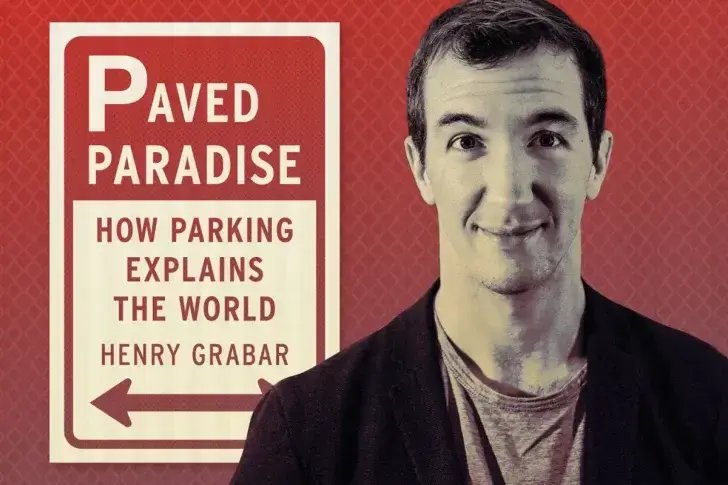Free to play with microtransactions is just the way to go for games that can be monetized in that manner. The lower barrier to entry means far more downloads and the piecemeal monetization means that players will frequently end up paying more than $60 alongside the larger player base.
- 1 Post
- 77 Comments


Does Payday have a singleplayer mode? I thought it was a multiplayer game.


a situation where your character would get killed for a bad dialogue choice.
I think this is a ridiculous thing to criticize too. Dialogue is important in a game like this and it has (sometimes lethal) consequences.
Imagine if this argument were applied to combat. It turns out that it is impossible to beat some encounters by role-playing a loner wizard who refuses to cast spells. Nobody in their right mind would actually believe that is a valid criticism.
The most they’ll have to pay is 20 cents. And that’s only with the 200,000th to 210,000th download for developers who are using the free version of Unity (provided that the developer is also making more then $200k/yr in revenue). After that, the developer will probably get Unity Pro and the download fees will start up at $1 million/yr in revenue and more than 1 million downloads. At that point, I don’t think that the 15 cents to 0.1 cents that will be charged will hurt too badly.


And Beehaw doesn’t have a huge amount of activity, so the prioritization provided by a Reddit-style ranking system is less useful. I think going to a typical forum/messageboard system just makes sense.
So the Stanford post assumes that we continue to consume roughly 2% more energy per year. At that rate, in 1000 years we would go from consuming 1.753×10^13 W to consuming 6.98×10^21 W. This would be 40,000 times the energy the sun puts on the Earth. Because most energy quickly turns into heat, this would heat up the entire surface of the Earth to the point where it is uninhabitable. I feel that tidal locking would be the least of our concerns at that point.
Professor Liu seems to have made a simple mistake: What his model showed was unsustainable was not tidal energy, but actually his assumed exponential growth rate of energy consumption to ludicrous levels, levels that would spell disaster for the Earth.
That said, the website’s math checks out. The linear approach is a very basic year 1 physics problem that can be quickly confirmed.
The values we need for this calculation:
The mass of the earth (M) is: 5.97×10^24 kg
The radius of the earth (R) is 6.37×10^6 m
The angular velocity of the earth (w) is 7.29×10^-5 rad/sec
The current total worldwide primary energy consumption is 1.753 × 10^13 W. This is pretty close to the article’s assumption
The equations necessary:
The moment of inertia of a solid sphere of uniform density is: 2/5 MR^2
Rotational kinetic energy is calculated by: 1/2 I w^2
After some very basic plug-and-chug:
This provides a moment of inertia of the earth (I) of: 9.69×10^37 kilogram meters squared
And a total rotational kinetic energy of: 2.575×10^29 kg m^2 /s^2 This is pretty close to what the Stanford website calculated.
So if we used the suggested 1% here, it would take around 5.0 x 10^10 years to tidally lock the earth to the moon with our current energy consumption. But that’s not what was assumed in the article. It was also assumed that we would continue to expand our energy consumption by a constant 2% per year. This requires basic calculus.
We have energy consumption that starts at the previously mentioned: 1.753 × 10^13 W
Below, n is equal to the number of years.
This leads us to a consumption growth formula of: 1.753×10^13 * 1.02^n
To indefinitely integrate that formula, we simply divide it by ln(1.02), which gives us: 8.85236×10^14 1.02^n (we will drop the +c because it’s not necessary here)
And now we just need to solve the following equation for n: 2.575×10^29 = 8.85236×10^14 1.02^n
Solving gives us a real solution of: around 1681 years. This is close enough for me to say that the math checks out, considering that I didn’t start with exactly the same base formulas. But ultimately this is besides the point. The math is right, but the premise of a constant 2% growth is ultimately unsustainable. Short of building planet-scale radiators to shed heat, the earth would become uninhabitable by virtue of the sheer energy consumption alone.


Even if the CEO of Wells Fargo loses your money, you will still get at least $250,000 of it back (assuming you had deposited that much) via the FDIC.
The FDIC will honor their obligations because to do otherwise would be to risk a massive bank run, of the sort that started the Great Depression. This wouldn’t just screw you over, it would screw over the ultra-wealthy too, and we can’t have that.
At the end of the day, someone can just not take your mattress money and you might be out of luck. Your mattress can burn down and all that money is gone, which is far more likely than Wells Fargo taking your money and then the FDIC not giving you anything.


Dwarf Fortress (before the Steam edition.) There was no in-game tutorial. I found a 2 hour long fanmade tutorial on Youtube, and even after that I had to learn a lot of stuff from the wiki.
The two songs I know of theirs are Riders on the Storm and Light My Fire.
At 16x, you will get 72MB/s read speed. My SSD has a 560MB/s read speed. Because of this discrepancy, loading a game from a blu-ray disc will take roughly 7.7 times longer. A 20 second loading screen becomes a 2.5 minute loading screen. This alone justifies the cost of keeping it on my SSD. Especially because if I want to remove it I don’t lose permanent access to the game, I can download it again in a couple hours.
At least in the areas where I see pronouns, they often do it in their status or the like and may not use brackets. “He/him” seems to be more widely understood than brackets or parentheses.
And now this is also just how we communicate that the speaker is stating their own pronouns. If I put “Pseu he” as my username, there’s a high chance of confusion. If I put “Pseu he/him” as my username, it’s obvious what I’m trying to say.


Hmm. I’m in a pretty small town. I think the most annoying thing is that we have two very nice river trails, they’re obviously supposed to connect, but they don’t. Both of them just stop before the highway. There was a planned underpass, but it was put on hold during COVID and our new city council seems uninterested in restarting construction.
As such, around 1/4 of our population can’t bike or walk into downtown, they must drive. And I can’t bike into work, as turning left on the highway is not gonna happen on a bike.
With how many people use our paths, we need much more investment into them. They’re great for residents and they’re a tourist attraction: we need to make them as easy to use as possible.


True, I wrote this from a US law perspective, where that kind of behavior is expressly protected. US law is also written specifically to protect things like search engines and aggregators to prevent services like Google from getting sued for their blurbs, but it’s likely also a defense for AI.
Regardless of if it should be illegal or not, I feel that AI training and use is currently legal under current US law. And as a US company, dragging OpenAI to UK courts and extracting payment from them would be difficult for all but the most monied artists.


I always feel a bit weird when people ask me what I do in my own spare time and my answer is basically fixing my shit, then pushing it just hard enough that it breaks again.


Unfortunately, copyright protection doesn’t extend that far. Artists simply don’t have that much say in what viewers do having seen their art, even if they decide to copy its style.
AI training is almost certainly fair use if it is copying at all. Styles and the like cannot be copyrighted, so even if an AI creates a work in the style of someone else, it is extremely unlikely that the output would be so similar as to be in violation of copyright. Though I do feel that it is unethical to intentionally try to reproduce someone’s style, especially if you’re doing it for commercial gain. But that is not illegal unless you try to say that you are that artist.
https://www.eff.org/deeplinks/2023/04/how-we-think-about-copyright-and-ai-art-0


So at the bare minimum, a mechanism needs to be provided for retroactively removing works that would have been opted out of commercial usage if the option had been available and the rights holders had been informed about the commercial intentions of the project.
If you do this, you limit access to AI tools exclusively to big companies. They already employ enough artists to create a useful AI generator, they’ll simply add that the artist agrees for their work to be used in training to the employment contract. After a while, the only people who have access to reasonably good AI is are those major corporations, and they’ll leverage that to depress wages and control employees.
The WGA’s idea that the direct output of an AI is uncopyrightable doesn’t distort things so heavily in favor of Disney and Hasbro. It’s also more legally actionable. You don’t name Microsoft Word as the editor of a novel because you used spell check even if it corrected the spelling and grammar of every word. Naturally you don’t name generative AI as an author or creator.
Though the above argument only really applies when you have strong unions willing to fight for workers, and with how gutted they are in the US, I don’t think that will be the standard.
And the percentage of homes for sale is quite small compared to the total number of homes. So if investors are buying even a few percent of the homes, that can still be most of the homes that are for sale.
I replaced my brakes last weekend. Did the pads, realized I also needed to do the disks and brake fluid too. Ended up being a lot more work than I wanted, mostly because I was missing tools.





I played a long while ago and a string of similar incidents eventually made me leave.
I came back ~6months ago, and it was more chill, but still not great.
I will say that if you’re in a group of 3 or more non-toxic people, you almost never get toxic players. Not only because you’ve only got 2 chances to roll low rather than 4, but also because they’re more aware that probably won’t get anywhere.